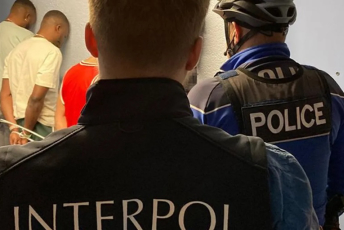In May, the 776th meeting of the African Union Peace and Security Council (AU PSC) underlined the need for AU member states to increase their efforts in the fight against organised crime – including illicit financial flows; wildlife crime; the exploitation of natural resources – notably by armed groups; and the illicit proliferation of weapons.
The meeting, themed ‘Illicit flows and financing of arms in Africa: sources of conflicts and impediments to silencing the guns in Africa,’ reflected on issues that stand in the way of achieving the AU’s goal of silencing the guns by 2020 (also known as ‘Vision 2020’).
Attaining this goal by 2020 seems to be becoming more elusive by the day. As some analysts have observed, a number of challenges stand in the way. These include a lack of momentum in reducing armed conflict and the related illicit flow of arms. These concerns were echoed among those present at the AU PSC meeting in May. The speakers concluded that the illicit proliferation of arms and ammunition cannot be controlled in a sustainable way without also stemming demand. Demand, in turn, is driven by factors as vast and varied as the channels through which proliferation occurs.
Resolving the continent’s many conflicts has been a top priority for the AU Commission (AUC) since its inception. The challenge – as acknowledged by the AUC – is that although the number of conflicts has been reduced, ‘fragility remains high in many post-conflict countries ... [and] it is still far too easy and frequent for violence and conflict to return.’ It further acknowledges that ‘there are still many long-drawn and protracted conflicts that have for years defied political solutions.’
Armed conflict remains one of the main drivers of illicit arms proliferation on the continent. It leads to related challenges, such as the diversion of arms from national stockpiles due to weak regulatory mechanisms; the failure to destroy excess, obsolete and illicitly acquired arms and ammunition; failure to mark, record and trace arms in national stocks arms; weaknesses in disarmament, demobilisation and reintegration processes; and weak governance and oversight of the defence sector.
State arsenals are a major source of small arms entering the illicit market. This happens through theft, corruption and battleground losses. A country in conflict is less likely to adequately secure its national stockpile against these risks. Preventing such diversion calls for best practices in physical stockpile security to be implemented – among others through the construction of robust armouries with sufficient safety mechanisms.
Excess and obsolete weapons, or those recovered from enemies or removed from circulation, ought similarly to be destroyed. The UN emphasises that the safe management of arms stockpiles is ‘a litmus test of a government’s ability to function as a guarantor of peace, security and development for its citizens.’
Africa’s time is running out to achieve the goals of Agenda 2063, the Africa we want. A concerted effort is required if real gains are to be made in achieving the seven aspirations outlined in the agenda.
One way is to gauge the continent’s progress is contained in the first 10-year plan (2014 – 2023) within Agenda 2063. Aspiration Four (A Peaceful and Secure Africa – which includes the silencing the guns initiative) aims, by 2023, for ‘all inter and intra-national conflicts [to] have ceased and the target of silencing of all guns on the continent [to] have been attained.’
For this to happen, mechanisms such as the African Standby Force, the Defence and Security Policy and the African Peace and Security Architecture will have to be in place and actively contributing towards the preservation and maintenance of peace. Ongoing instability across the continent bears heavily on the potential of attaining even just the first 10-year plan. Continental conflict trends show that African governments use violence both within and across borders as a means of holding onto power, with armed actions involving state forces on the increase.
It is estimated that 24% of all armed actions in 2016 involved state forces: a figure last seen in 2011-2012. When viewed in the context of armed groups spreading across the continent, the emerging trend seems to be that political violence is on the rise. Despite this challenge, Africa can still reverse this negative trend if concerted efforts are put in place. Over the years, some of AU's sub-regions have developed policies and structures necessary for turning around this negative trend. The key ingredient remains the will and commitment from states to implement these mechanisms.
Nelson Alusala, senior research consultant, ENACT project, ISS







